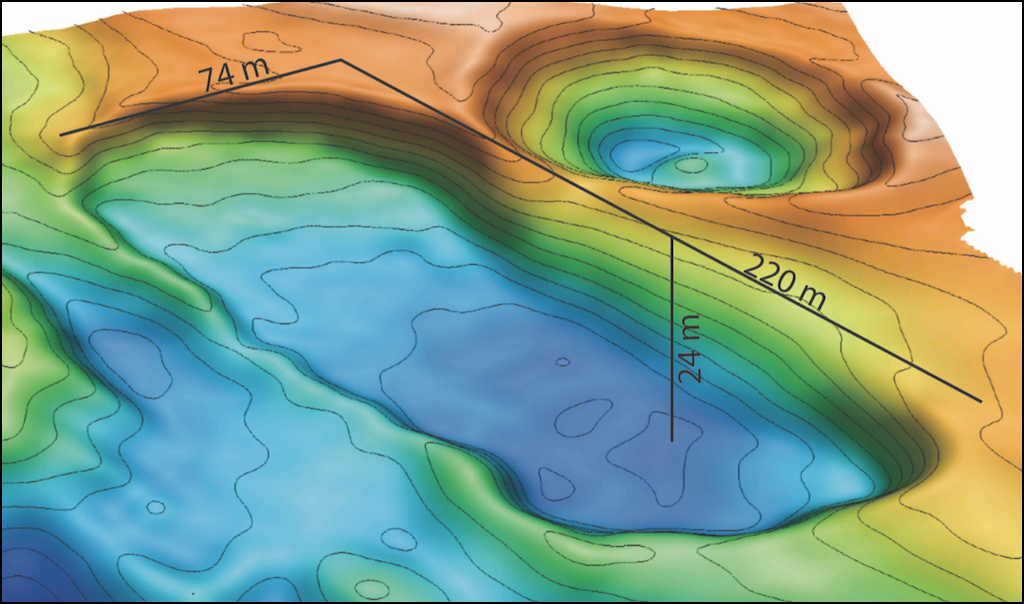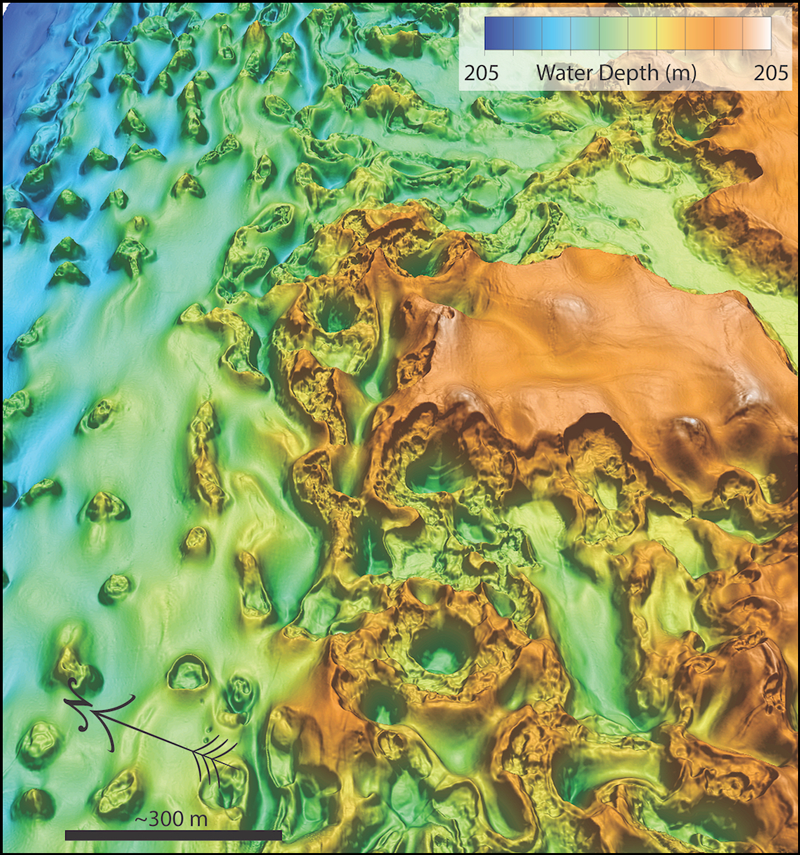“There were a number of family home–sized depressions [that] developed during this time period—that’s pretty extraordinary.”
The Arctic is melting. Warming temperatures are thawing permafrost, the frozen ground layer that supports human communities and natural ecosystems in the northernmost reaches of the planet. There are many open questions about permafrost degradation on land, like exactly how much carbon is entering the atmosphere and its impacts on climate change. But there are even more unknowns about what’s happening with permafrost submerged below the frigid waters of the Arctic Ocean.
A new study published in the Proceedings of the National Academy of Sciences of the United States of America described some of submarine permafrost’s large changes at the continental shelf edge and slope of the Canadian Beaufort Sea from 2010 to 2019.

Over the study period, the international team of scientists detected the formation of “at least one new depression, which is equivalent [in volume] to a New York City block composed of six-story buildings,” said Charlie Paull, a marine geologist at the Monterey Bay Aquarium Research Institute and a coauthor of the new research. “Beyond that, there were a number of family home–sized depressions [that] developed during this time period—that’s pretty extraordinary.”
“Before this study, no one realized how dynamic that area is,” said Jennifer M. Frederick, a computational geoscientist at Sandia National Laboratories who was not involved in the new study.
Mapping Dramatic Changes
In 2010, researchers mapped a 95-kilometer (59-mile) stretch of the Arctic shelf edge in the Canadian Beaufort Sea, about 180 kilometers (nearly 112 miles) offshore. The ship-based survey uncovered unusually rough seafloor between 120 and 200 meters below the surface at the transition between the shelf edge and the slope.

Over the next several years, the team of scientists scrutinized the same area multiple times by performing additional surveys using ship-mounted multibeam sonars and collecting higher-resolution data with autonomous underwater vehicles. The approach enabled them to track changes in seafloor morphology over time.
“It’s a very clever use of repeated data sets,” said Carolyn Ruppel, a marine geophysicist who leads the U.S. Geological Survey’s Gas Hydrates Project and was not involved in the new work.
The team identified distinct bands of features. Oval-shaped depressions were situated in a region of rough, denuded terrain. The team detected features at lower depths resembling pingos, ice-cored hills that dot the Arctic landscape.
Slow Process
Unlike what’s happening to permafrost on land, the researchers don’t think submarine permafrost in the Beaufort Sea is thawing due to warming temperatures because the waters bathing the depression-pocked region are about −1.4°C (29.4°F).
“That does not melt permafrost,” Paull said. Instead, the researchers proposed that groundwater is slowly moving—a few hundred millimeters per year—under the permafrost and warming it from underneath. As the permafrost thaws, it can periodically collapse to produce the large depressions detected by the team.
“This is an area where very small changes, but sustained over long periods of time, may be playing out big effects.”
“This is an area where very small changes, but sustained over long periods of time, may be playing out big effects,” Paull said. The team estimated that the rough terrain along the edge of the continental shelf took about 1,150 years to form.
Frederick said the authors’ analyses seem to support conclusions from a 2015 modeling study she coauthored, which proposed that groundwater could be flowing offshore to this area. The pingo-like features on the seafloor, for example, align with where the model expected groundwater to rise up to the seafloor. Depending on the balance of water temperature, salinity, and flow rate, the circular features could appear when groundwater freezes as it approaches the colder seafloor, according to Paull and his colleagues.
“One of the predictions in the model was that this groundwater flow is still occurring today,” Frederick said. “It was really cool to see that these things are actually modern-day phenomena.”
—Jack Lee (@jackjlee), Science Writer
Citation: Lee, J. (2022), Groundwater flow may contribute to submarine permafrost thaw, Eos, 103, https://doi.org/10.1029/2022EO220244. Published on 18 May 2022.
31 May 2022: This article has been updated to correct the seafloor temperature: It is −1.4°C (29.4°F).

